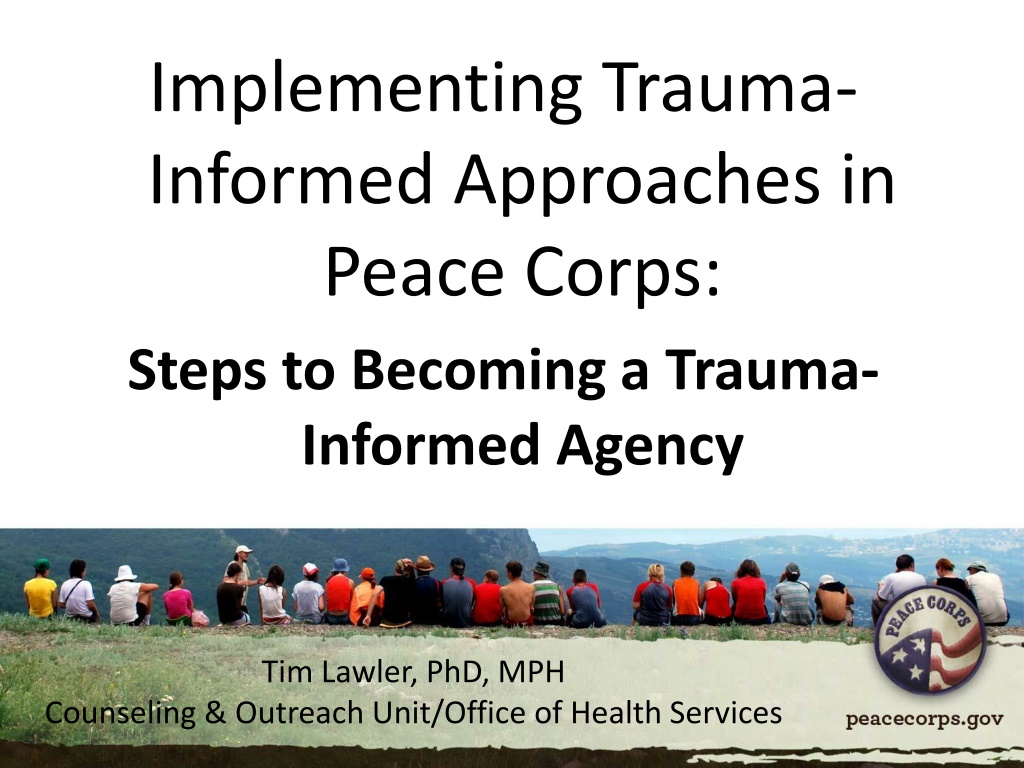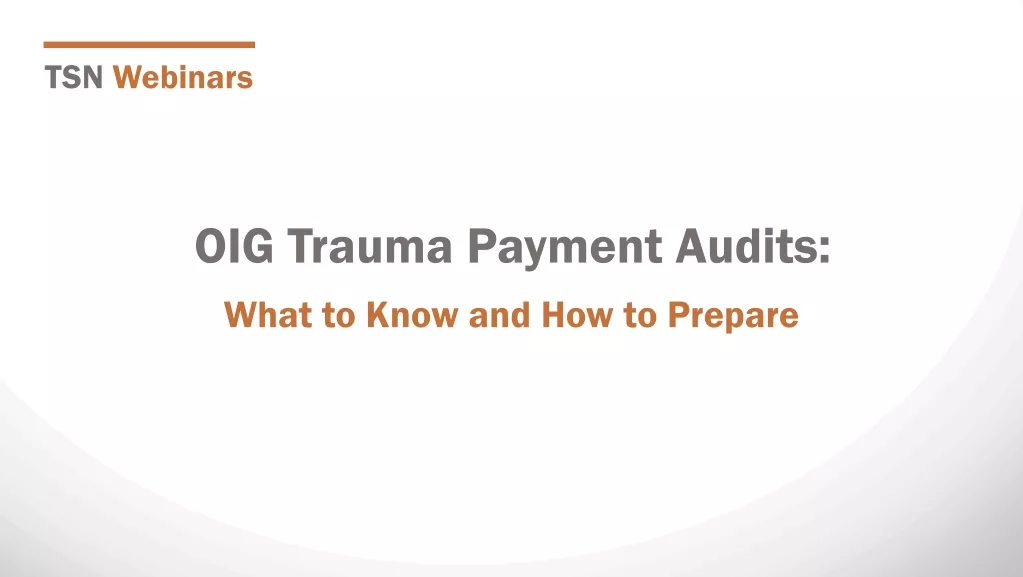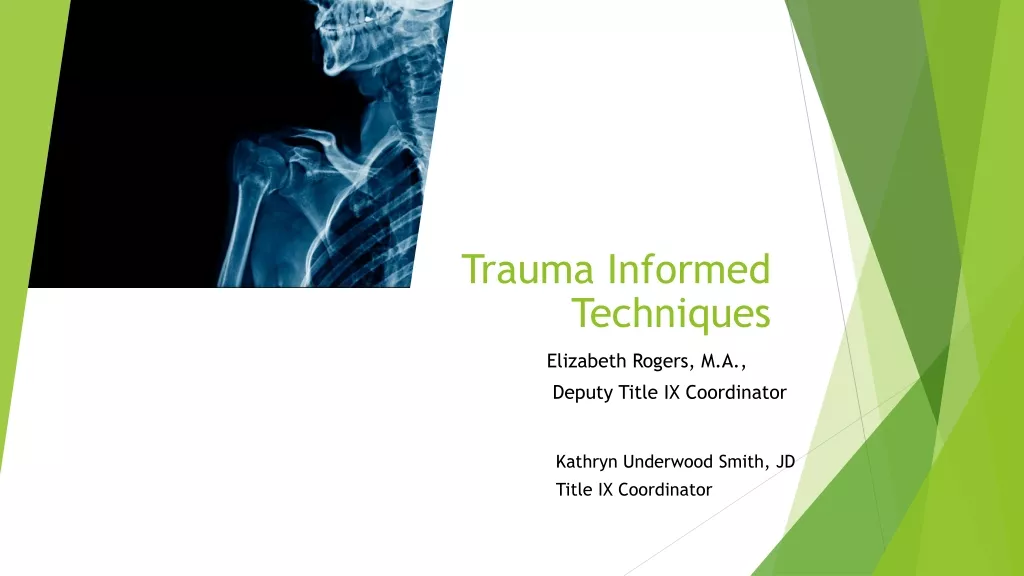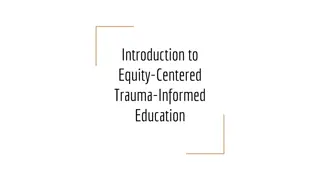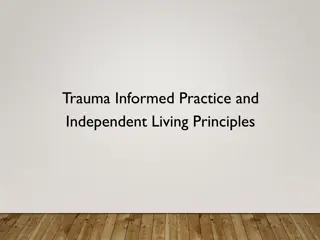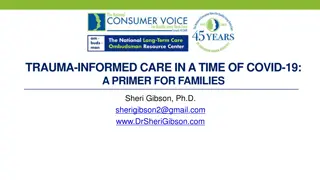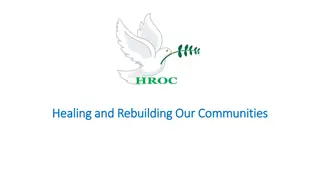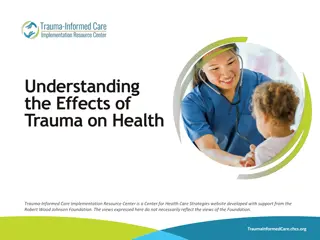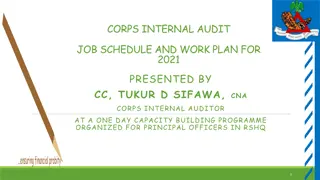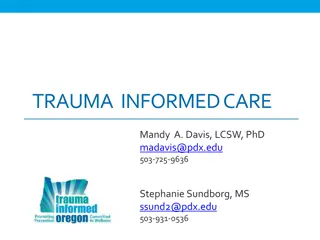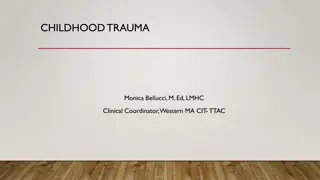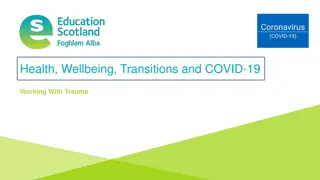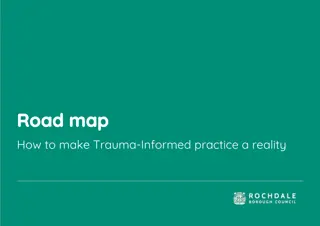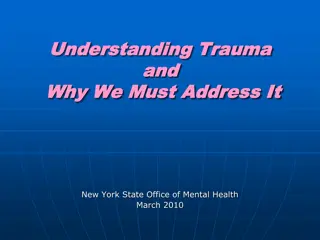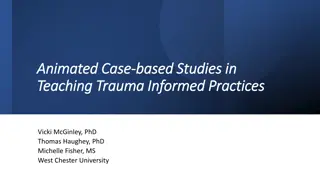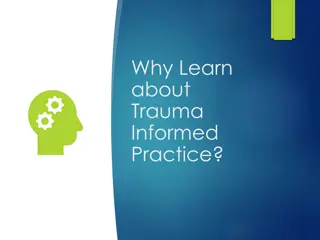Steps to Implement Trauma-Informed Approaches in Peace Corps
Implementing Trauma-Informed Approaches in Peace Corps involves steps such as developing policies, providing training, garnering support, collaborating with federal agencies, and overcoming barriers. The goal is to create a trauma-informed agency that supports the well-being of staff and volunteers. Challenges include budget constraints and the need for ongoing training and system reviews. Guidance suggests learning from others, celebrating successes, and recognizing that the process is continuous.
Download Presentation

Please find below an Image/Link to download the presentation.
The content on the website is provided AS IS for your information and personal use only. It may not be sold, licensed, or shared on other websites without obtaining consent from the author. Download presentation by click this link. If you encounter any issues during the download, it is possible that the publisher has removed the file from their server.
E N D
Presentation Transcript
Implementing Trauma- Informed Approaches in Peace Corps: Steps to Becoming a Trauma- Informed Agency Tim Lawler, PhD, MPH Counseling & Outreach Unit/Office of Health Services
The Peace Corps Initiative 20/20 (2010) Congressional hearing Soul searching Action plan for PCVs (for 7,000 PCVs with a 50% annual turnover) for US HQ staff (for almost 1,000 with 2 - or 5- year contracts) for overseas staff (in 70+ countries)
Policy and Training As a small agency, PC somewhat more agile Writing policies was a difficult exercise The addition of Office of Victim Advocate changed which department owned which aspect Managers defended their turf Training PCVs and non-medical staff fell on the shoulders of Safety and Security Training medical officers continued to be Health Service s responsibility
Support Needed Total commitment of the agency s director Outside consultants meeting with senior staff for one year A series of 2-day workshops for involved HQ staff including Bold Statements Congressional liaisons to negotiate Assistance of other federal agencies and work groups Skilled, dedicated teachers A committed internal committee or workgroup
Collaboration with other Federal Agencies/Departments DoD HHS VHA DoJ Federal Partners: Women and Trauma
Barriers Budget (like all federal agencies ) Trusting the field (and not making everything a top-down directive) We ve come far, but we re not done Systemic review of full implementation of TIO through all relevant policies and procedures Staff turn over both at HQ and with US staff at posts Constant need for training/retraining Institutional memory sometimes lacking Half of 7,000+ PCVs are new every year
Guidance for Other Agencies What We ve Learned Know that you re not alone Some agencies have already worked out what you might be struggling with The wheel doesn t have to be reinvented it might just need some tweaking It s a long process without a clear end point Celebrate your successes along the way
